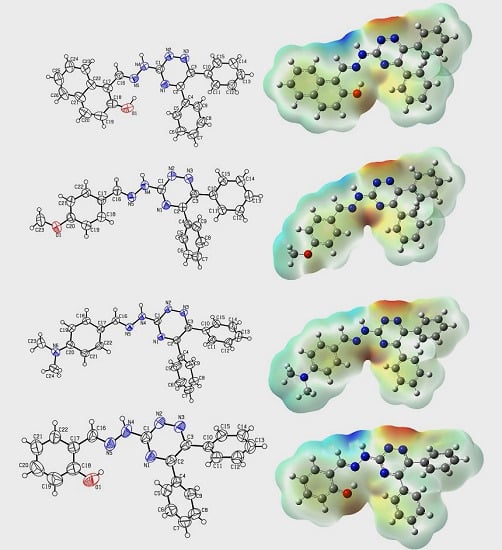Synthesis, Crystal Structures and Spectroscopic Properties of Triazine-Based Hydrazone Derivatives; A Comparative Experimental-Theoretical Study
Abstract
Share and Cite
Arshad, M.N.; Bibi, A.; Mahmood, T.; Asiri, A.M.; Ayub, K. Synthesis, Crystal Structures and Spectroscopic Properties of Triazine-Based Hydrazone Derivatives; A Comparative Experimental-Theoretical Study. Molecules 2015, 20, 5851-5874. https://doi.org/10.3390/molecules20045851
Arshad MN, Bibi A, Mahmood T, Asiri AM, Ayub K. Synthesis, Crystal Structures and Spectroscopic Properties of Triazine-Based Hydrazone Derivatives; A Comparative Experimental-Theoretical Study. Molecules. 2015; 20(4):5851-5874. https://doi.org/10.3390/molecules20045851
Chicago/Turabian StyleArshad, Muhammad Nadeem, Aisha Bibi, Tariq Mahmood, Abdullah M. Asiri, and Khurshid Ayub. 2015. "Synthesis, Crystal Structures and Spectroscopic Properties of Triazine-Based Hydrazone Derivatives; A Comparative Experimental-Theoretical Study" Molecules 20, no. 4: 5851-5874. https://doi.org/10.3390/molecules20045851
APA StyleArshad, M. N., Bibi, A., Mahmood, T., Asiri, A. M., & Ayub, K. (2015). Synthesis, Crystal Structures and Spectroscopic Properties of Triazine-Based Hydrazone Derivatives; A Comparative Experimental-Theoretical Study. Molecules, 20(4), 5851-5874. https://doi.org/10.3390/molecules20045851






